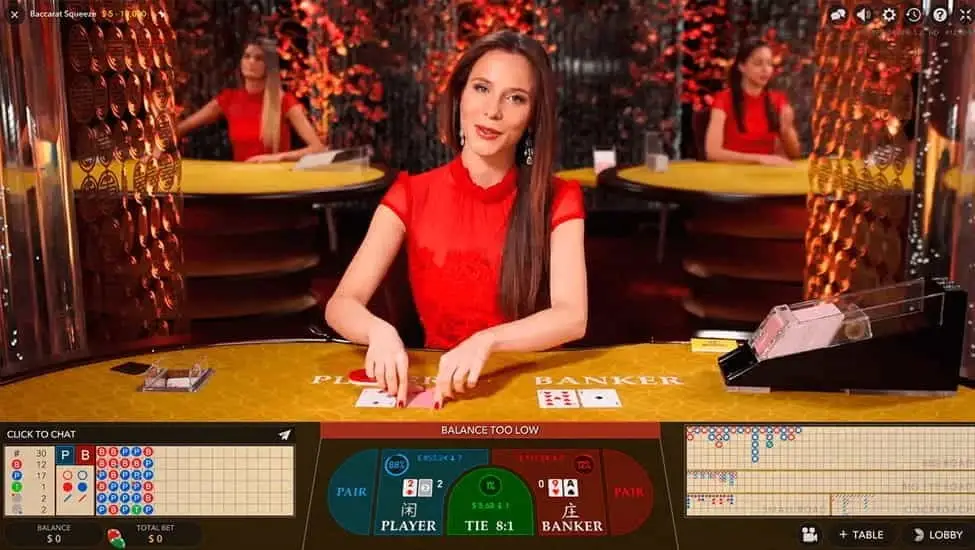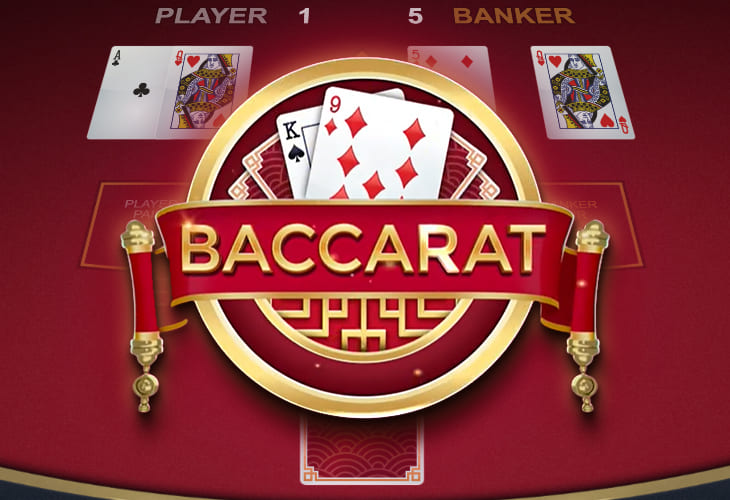Live mode has changed the way we look at board games. The format brought the casino into the player’s personal space. The game mechanics were preserved, but the interaction, pace and expectations changed. To understand how live baccarat differs from the classic version, it is important to analyze not only the visual aspects, but also the psychological and technical aspects of the game.
Study vs. room: how does live baccarat differ from the classic version?
Live Baccarat takes place in a studio with cameras and a dealer who controls the game live. The interface simulates a table, but the player interacts via the screen using a betting field and buttons. In the classic version, the session takes place in the room, the participant personally places the chips, looks at the cards and listens to everything that happens. The traditional format requires physical presence and creates the effect of personal participation. Live Baccarat, on the other hand, offers the possibility of participating remotely, which preserves the atmosphere, but without physical presence.
Management and the role of the dealer
 When considering the differences between live and classic baccarat, the first thing to consider is the dealer’s involvement. In space, the moderator is the face of the game: he speaks, moves, looks at the participants and adapts to the situation. A pause, an emphasis, even a look: everything affects the atmosphere. The dealer announces the move, accepts the bets, counts the points and confirms the results. Contact is created immediately and on many levels: visual, vocal, intuitive.
When considering the differences between live and classic baccarat, the first thing to consider is the dealer’s involvement. In space, the moderator is the face of the game: he speaks, moves, looks at the participants and adapts to the situation. A pause, an emphasis, even a look: everything affects the atmosphere. The dealer announces the move, accepts the bets, counts the points and confirms the results. Contact is created immediately and on many levels: visual, vocal, intuitive.
In live baccarat, the dealer remains physically active, but responds to the interface rather than to the live group. Cameras record every action, from shuffling to placing a card. The dealer’s words are transmitted wirelessly, but the player’s response is sent to the chat. This changes the role of the presenter from a panel to that of a livestream actor. Buttons replace chips, commands replace voices. Contact with the player is interrupted, only a visual confirmation remains.
What is the difference between live and classic baccarat: interface and interaction?
In classic baccarat, the player takes chips, places them on the felt table, watches the dealer’s reaction and feels the rules of the room. Gestures, touches, exchanges of words: everything contributes to the interaction. The mistake is immediately noticeable: the bet is placed incorrectly, the dealer asks for a correction and everyone sees the move. This creates a high degree of responsibility and presence.

In the live version, the bet becomes a digital transaction. The player clicks on the screen: amount, position, confirmation. All mechanics are controlled via the interface. The points are calculated automatically and the result is displayed immediately. There is no delay in exchanging text lines and there is no possibility to “change your mind”. Speed is the decisive factor.
The difference between live baccarat and the classic version is the digital divide. Live games give control, virtual games give speed. The first format is based on intuition and ritual, the second on logic and templates. One platform determines the rhythm, the other the atmosphere.
Pace of play and length of round
Classic baccarat offers room for flexibility. The dealer sees when the player is behind. The guest asks a question and the game freezes. Someone has to exchange tokens: the whole group waits. The live format offers the opportunity to deviate from the pace. This creates the “life” effect: one round lasts 40 seconds, the other two minutes. Liven things up.
In live mode, everything is difficult. The countdown timer is the star of the session. When the bowl is full, the pole is placed. No exceptions. The dealer cannot slow down the process, the system blocks the interface. On average, a round lasts exactly 40 seconds, regardless of the situation.
The difference between live baccarat and the classic version is the standardization of the rhythm. The online platform speeds up the game, eliminates pauses and increases the number of rounds per hour. This increases the casino’s revenue, but decreases participation. The player acts mechanically, decisions are made faster, but the sense of purpose is lost.
Betting variability: range and flexibility
The offline casino uses a fixed grid: the minimum bet is $25, the increase is $5. The player must exchange money, receive chips and adhere to the format. As a result, access to new members is limited. High bets are a deterrent, low bets are not possible due to internal rules.
Live Baccarat solves this problem. The platform allows bets from $1. Some versions even start at $0.10. This makes the game accessible: every beginner can start without risk. At the same time, it is still possible to place a high limit bet in the VIP area.
The autoplay, double betting and preset patterns (favorite bets) functions increase efficiency. The player starts 10 rounds with one click, without waiting. This increases the pace and creates space for strategy. In this context, it is the adaptability that distinguishes live baccarat from the classic version. Online games can be scaled to any amount, offline table games cannot. One format restricts, the other enlarges.
Transparency and control
Offline casinos are based on trust. The player sees the cards, but does not write them down. The dealer speaks loudly, but the camera does not film him. There is control, but in a smooth way. If you have a dispute, you can contact the manager. Video recordings are often not available.

Live Baccarat offers complete transparency. The cameras work from 4 angles. The cards are placed on a glass table, on which markings are made. All actions of the distributor are archived and the audio is saved. The algorithm reads the cards, checks the points and compares them with the payout table.
If an error occurs, the system reports this. This eliminates the human factor. The system not only checks the actions of the dealer, but also those of the player. After the signal, you can no longer place bets. Everything is transparent and objective. The difference between live baccarat and the classic version is the degree of control. One format is based on human observation, the other on technology.
How does player behavior differ between live baccarat and classic baccarat?
The classic format creates emotional involvement. The player holds the card, listens to the table and feels the reactions of the others. It affects psychology. In live baccarat, the player isolates. Decisions are made faster, actions are more pragmatic and emotions are better controlled. The live format is suitable for those who are looking for rhythm, speed and results. Classics work because of their atmosphere, style and tradition. The difference is the same as live chess and online blitz chess: the same meaning, but different approach.
For beginners, the live baccarat format is an ideal platform. The simplicity of the user interface, the visibility of bets, the automatic scoring and the transparency of the distribution reduce the fear of making mistakes. Classics are all about personal experiences and understanding the dynamics of the space.
Conclusion
 To understand the difference between live baccarat and the classic version, it is not only important to understand the difference in format, but also the difference in approach to the game itself. One format immerses you in the physical space, the other moves the experience to the digital world. The difference is not in the rules, but in the experience of the process. The choice depends on the goal: atmosphere or functionality, ritual or speed, contact or control. Both formats add a new dimension to the game, but in different ways.
To understand the difference between live baccarat and the classic version, it is not only important to understand the difference in format, but also the difference in approach to the game itself. One format immerses you in the physical space, the other moves the experience to the digital world. The difference is not in the rules, but in the experience of the process. The choice depends on the goal: atmosphere or functionality, ritual or speed, contact or control. Both formats add a new dimension to the game, but in different ways.
 en
en  ru
ru  de
de  ar
ar  es
es  nl
nl  hi
hi  fr
fr  it
it  pt
pt  el
el 



